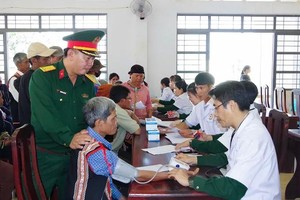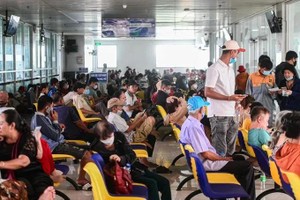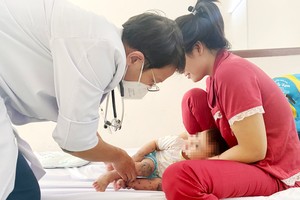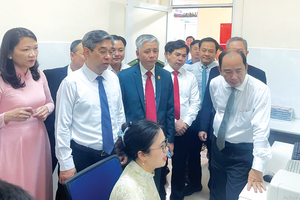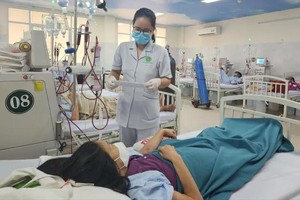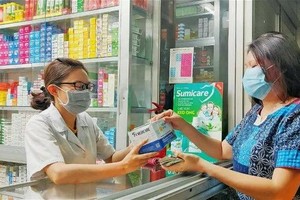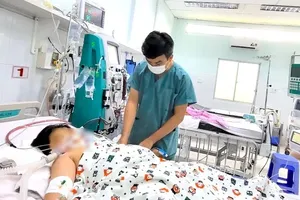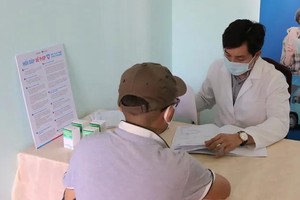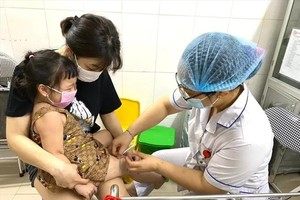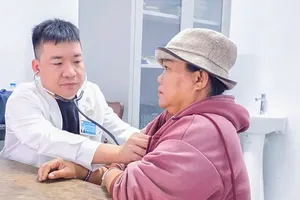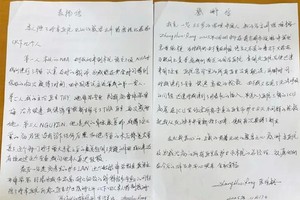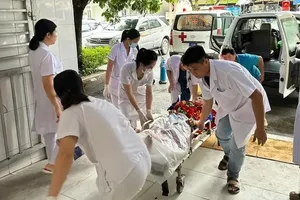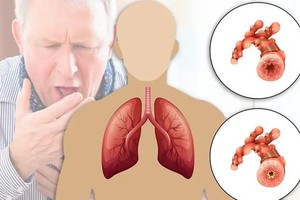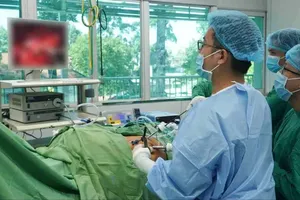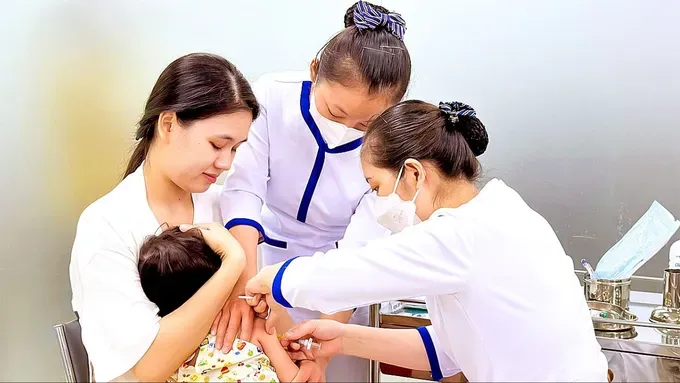
From the early hours of October 18, the examination department at Children’s Hospital No.2 was already packed with parents holding young children, all waiting to be seen. For Nguyen Thi Thu Trang from An Khanh Ward in HCMC, the wait was an anxious one. She sat outside an examination room, clutching her child, who is just over a year old.
“He’s had a high fever, and these blisters popped up on his palms and in his mouth two days ago,” she explained. At first, she thought it was just a normal fever and managed it with antipyretics at home. “But today,” she said, “he’s just been crying and refuses to eat anything.” That’s when she decided to bring him in, where doctors reportedly diagnosed him with hand-foot-mouth (HFM) and recommended admission for monitoring.
According to Level-II Specialist Nguyen Dinh Qui, Head of the Infectious Diseases Department at Children’s Hospital No.2, the situation has escalated quickly. “In just the last few days, our inpatient cases for HFM have jumped three to fourfold compared to two weeks ago,” he stated, noting this figure doesn’t even count the outpatient load.
As of the morning of October 18, his department was managing over 20 severe HFM cases alongside nearly 60 dengue fever cases exhibiting warning signs. What’s particularly concerning, he added, is that a large portion of these young patients are infants or children with underlying health conditions, placing them in a high-risk category for severe complications if not treated swiftly.
While HFM cases are climbing, Mr. Nguyen Dinh Qui pointed out that dengue fever cases also remain stubbornly high. HCMC’s ongoing, frequent rain, according to medical experts, is creating the perfect breeding ground for these pathogens to flourish. The forecast isn’t optimistic. It’s expected that infectious disease rates will continue to climb, and the risk of a “dual epidemic” with different diseases peaking simultaneously is considered very significant.
Statistics from the HCMC Center for Disease Control (HCDC) paint a stark picture. The cumulative number of dengue fever cases has reached 43,474 since the beginning of the year, a figure that includes 17 fatalities. The proportion of patients requiring hospitalization is steadily increasing, placing immense pressure on the city’s hospital system. Concurrently, HFM cases are also accelerating. The year-to-date total for HFM has climbed to 24,603, with the vast majority of cases being recorded in children under five years old.
This pressure isn’t isolated. Children’s Hospital No.1 and the City Children’s Hospital have, in recent days, also reported their admissions for both dengue and HFM have doubled or even tripled compared to mid-year figures. It’s reported that many departments are scrambling to add extra beds and reinforce their emergency staffing levels just to keep up with the treatment demand.
Mr. Nguyen Dinh Qui explained that his hospital has prepared a thorough response plan. “We’ve stockpiled treatment medications, arranged for additional beds and isolation areas, and have a plan to pull in medical staff from other departments if needed,” he said.
Beyond simply partitioning the Infectious Diseases Department to prevent cross-contamination between different illnesses, the hospital is also ready to establish temporary bed wards in other departments, all to ensure they don't get overwhelmed.
Deputy Director Le Hong Nga of the HCDC confirmed that the city’s health sector has rolled out multiple synchronized solutions. The epidemic surveillance system, she said, has been strengthened to ensure any new outbreak is detected early and handled immediately at the community level. Anti-epidemic teams are actively coordinating with local authorities to conduct chemical fogging to kill mosquitoes, eliminate larvae, and inspect and handle high-risk spots.
City-level hospitals, she noted, have readied plans to expand bed capacity, boost their workforce, and stockpile necessary drugs, IV fluids, and resuscitation equipment. Furthermore, lower-level medical facilities have received updated training to improve early detection and ensure correct treatment protocols for dengue and HFM, which should help avoid late hospital transfers.
Public awareness campaigns are also being ramped up. Schools, nurseries, and kindergartens have been advised to intensify classroom hygiene, disinfect toys, and closely monitor student health to catch any suspected cases early.
Children’s hospitals are concurrently logging a sharp spike in visits and admissions for respiratory illnesses.
At Children’s Hospital No.2, the first week of October saw 12,332 visits, double the number from the first week of September. Inpatient admissions for these illnesses also jumped from 286 to 475 cases. Children’s Hospital No.1 and the City Children’s Hospital are similarly seeing a high volume of children with acute respiratory infections.
These are reportedly caused mainly by viruses, with a smaller number developing bacterial superinfections. Experts assess that this is the transitional, inter-seasonal period, making children, especially those under two or with underlying conditions, highly susceptible to respiratory viruses.
